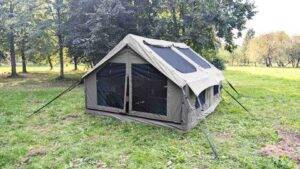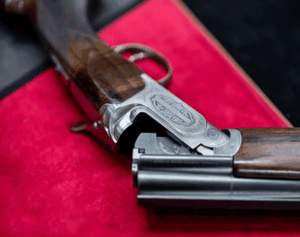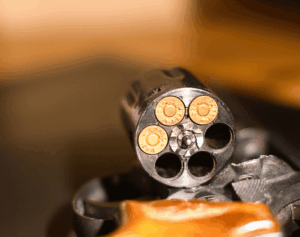
Unlike most of your friends and acquittances, you are aware that disaster strikes when least expected, be it a hurricane, war, economic collapse, outbreak, the Armageddon – you name it. Even thought nearly every urban survivalist or seasoned prepper knows that bugging out should be the last option, having a prepper bag ready can spell the difference between life and death for you and your loved ones.

In today’s article, we will focus on the kitchen utensils you shouldn’t forget to pack as preparing food can become a challenge out in the wild. Survival experts recommend taking the minimalist approach when choosing what to put in a prepper bag. Remember that you might have to carry the bag for miles before you can find a safe place to set up camp.
So, take with you only tools that are lightweight and have multiple purposes, like the spork, i.e. a handy hybrid between a spoon and a fork. Also, bring as many versatile items as you can as they can be used for multiple tasks, like the survival knife. When packing your Sergeant Tactical Backpack, always keep in mind that every ounce matters. Now, here’s a list of the must-haves when it comes to survival cookware.
1. Metal Cup/Pot
Just like the survival knife, a metal cup/pot from a lightweight material can be incredibly versatile. In a metal cup, you can cook food, boil water (to purify it), heat up coffee or prepackaged camping food, collect rainwater, and so on. A metal cup can replace a plate, so we recommend not bringing any plates as their weight can add up and they take up precious space in your prepper bag. The idea is to cut down on the bag’s weight and get only the essentials.
The ideal metal would be titanium (since it doesn’t rust and is very lightweight) or food grade stainless steel (it is cheaper than titanium but slightly less lightweight).
Also, to save space in the bag, you could dig deeper into your pocket and buy a collapsible camping cup with keychain. A good quality foldable cup can be used as a bowl or a mini-pot to boil water in it on the go and it is very easy to clean.
NOTE: When bugging out, you should have at least three days’ worth of food in your bag. Food can be bulky and heavy, so save up space by bringing only metal kitchen utensils as they are durable and can be used for meal preparation on heat. So, forget about plastic cookware, regardless of how lightweight it may be.
2. The Spork
Another fantastic kitchen utensil you should add to your prepper bag is the spork, a combo between a spoon and a fork. Choose a metallic one as you can use it for both eating and preparing your meals. We recommned buying a titanium spork, as titanium is unbreakable, rust resistant, nonmagnetic, and very lightweight. A titanium spork can weigh as little as 0.70 oz (20 grams).
Also, don’t bring a small knife with you for spreading butter or jam or slicing the bread. You will have your survival knife with you, which can be put to good use here too.
3. Survival Knife
Invest in a high-quality, fixed-blade knife as a versatile and durable survival knife is the must-have of must-haves in a survival kit. When looking for a knife, you should take into account its weight too. It should be highly effective, but not too heavy. Also, bear in mind that some models’ sheath can weigh alone around a quarter of pound.
Also, forget about the credit-card knife, no matter how versatile it might seem as it cannot match a survival knife when it comes to critical uses in the wild. Just research the best survival knives and after you’ve found The One spend some time outdoors practicing and learning how to use it.
A good survival knife should have multiple uses, like:
- Cutting various types of foods and materials;
- Slicing bread, salami, etc.;
- Spreading butter, jam, cream cheese, etc.;
- Skinning, for removing skin from an animal carcass
- Piercing for those times when you’ll need to make a small hole in a material and a blunt tip knife is of no use;
- Shaving, a well-sharpened knife can double as a straight razor (but it takes some practice);
- Digging, a survival knife is better than nothing in case you forgot the camp shovel;
- Fire starting, a survival knife with a good blade should be able to strike sparks to start a fire in no time.
In addition, don’t forget the knife sharpener as using the knife for chipping, digging, or splitting can make it dull lightning fast. Preppers haven’t reached a consensus on what material is best for a survival knife – stainless steel or carbon steel – as they both have their pros and cons. Carbon steel blade fans like the material because it is lightweight, easier to sharpen, and cheaper than stainless steel. But carbon steel has one major drawback: rust.
Survival experts also recommned to take a backup knife with you, as no second option is no option (see the ‘two is one, one is none’ rule) in the wilderness if you happen to break the blade of or lose the main survival knife. But don’t take any type of backup knife. Check out more information on knife sets, materials, and the functionality of each knife before choosing the right one.
4. Survival Multi-Tool
A good survival multi-tool is a must-have as it can allow you to perform many functions for which a survival knife would be useless. Multitools come in three styles: the Swiss Army knife, survival multi-pliers, and survival business cards.
Multi-tools can pack various devices and functions under one roof, like can openers, measuring sides, bottle openers, saw blades, and more. A high-quality multi-tool should be both lightweight, easy to use, and highly multi-functional.
Conclusion
When picking a piece of survival cookware for your prepper bag, make sure that it is durable, multi-purpose, and lightweight. Remember than every ounce counts when bugging out, so choose carefully what you take with you. The best kitchen utensils for camping or survival in the wild are metal ones, preferably made of titanium or stainless steel. Also, spend some time researching the best survival knives, as they are critical tools.
Article Written By; Amanda Wilks







